You are using an out of date browser. It may not display this or other websites correctly.
You should upgrade or use an alternative browser.
You should upgrade or use an alternative browser.
Alternative fighter for Argentine AF & Navy during Falklands war.
Rule of cool
ACCESS: Top Secret
- Joined
- 16 January 2024
- Messages
- 1,917
- Reaction score
- 2,566
As for all the comments about the failure of Sea Harriers to intercept aircraft before they dropped their bombs, this misses the point. The Sea Harrier were part of an overall air defence scheme, where ships were deliberately placed in the path of incoming bombers as 'live bait'. Attackers couldn't undertake a leisurely approach at altitude, get a look at their target and make a deliberate attack. Instead they were dodging Sea Harrier CAPs, Type 64 combos and either attacking the gunline ships or dodging them as well to pop-up over the hills surrounding San Carlos to find a ship to attack.
Also, the value of attrition is underestimated. 10% of 97 combat jets were lost prior to the landings, another 10% of the remaining 87 were lost on the landing day 21 May, another 10% of the remaining 78 were lost 23-25 May and another 7% of the remaining 70 were lost 27-30 May. In a month of fighting the Argentines had lost a fill 1/3 of its combat strength, so it's hard to say the Sea Harriers failed when the British won the attrition battle.
Also, the value of attrition is underestimated. 10% of 97 combat jets were lost prior to the landings, another 10% of the remaining 87 were lost on the landing day 21 May, another 10% of the remaining 78 were lost 23-25 May and another 7% of the remaining 70 were lost 27-30 May. In a month of fighting the Argentines had lost a fill 1/3 of its combat strength, so it's hard to say the Sea Harriers failed when the British won the attrition battle.
alejandrogrossi
ACCESS: Secret
- Joined
- 20 September 2019
- Messages
- 268
- Reaction score
- 447
That is a A-4M wit 2 pylon per wing.In the video of "First Lieutenant Carlos "Charly" Perona was the protagonist of the first clash between the Argentine military aviation and the Harrier fighter-bombers of the British invading fleet. He did so piloting a Mirage III on May 1, 1982, the day of the Argentine Air Force's baptism of fire in the Malvinas War. When facing two enemy aircraft, armed with the lethal Sidewinder L missile, which the US had given to Great Britain, the Argentine aviator was shot down, ejected and managed to survive. Perona, "
View attachment 754963
He said the Magic was not good, in my humble opinion Python 3 or even AIM-9L on Skyhawks would had made a difference
View: https://www.youtube.com/watch?v=ps5cf5JDFh0&t=346s
This video mention how Guarani Language was used to confuse the British by not using Spanish, but Guarani, he says how many British spoke Guarani?
The only A-4 ( in the war) with 2 pylons per wing was the A-4C.
Our A-4B and Q, had 1 pylon per wing.
A-4C (war time photo)
A-4B (war time photo)
The only configuration in AAR for the B and Q was this one
2 AAM and 1 drop tank in central pylon

A-4C in 1978 (pre war)

Same plane in 1983,certification test of M550 Magic II

In all that cases, are A-4C.
We can not distract our attack planes ( with the vital AAR capacity ) to Air to air role.
We needed a fighter plane with AAR capacity
My election

For this, we this need, more tankers. We had 2 KC-130.
F-14ATomcat
ACCESS: Secret
- Joined
- 26 May 2024
- Messages
- 480
- Reaction score
- 915
Gracias Alejandro.That is a A-4M wit 2 pylon per wing.
The only A-4 ( in the war) with 2 pylons per wing was the A-4C.
Our A-4B and Q, had 1 pylon per wing.
A-4C (war time photo)

A-4B (war time photo)

The only configuration in AAR for the B and Q was this one
2 AAM and 1 drop tank in central pylon

A-4C in 1978 (pre war)

Same plane in 1983,certification test of M550 Magic II

In all that cases, are A-4C.
We can not distract our attack planes ( with the vital AAR capacity ) to Air to air role.
We needed a fighter plane with AAR capacity
My election

For this, we this need, more tankers. We had 2 KC-130.
Thanks to be honest I did not know that, but I do not understand why the FAA did not send some A-4s with AAMs and some to attack ? was it low stocks of AAMs?
In my opinion the A-4s with Air to Air missiles would had allowed to fight the Harriers at least to keep them awy from the attackers.
Any way interesting, I have to confess I am against war, but in 1982 I was a kid, 11 years old, I still remember that I supported Argentina, to this day I still like Argentina, I wanted to move there, my uncle lived in Mendoza because he was sent there to work and my mother told me that her Grand Father had a brother who emigrated to Argentina from Spain.
Any way Saludos
Last edited:
carvalho2008
Naval alternative projects
- Joined
- 20 November 2015
- Messages
- 452
- Reaction score
- 500
No.As for all the comments about the failure of Sea Harriers to intercept aircraft before they dropped their bombs, this misses the point. The Sea Harrier were part of an overall air defence scheme, where ships were deliberately placed in the path of incoming bombers as 'live bait'. Attackers couldn't undertake a leisurely approach at altitude, get a look at their target and make a deliberate attack. Instead they were dodging Sea Harrier CAPs, Type 64 combos and either attacking the gunline ships or dodging them as well to pop-up over the hills surrounding San Carlos to find a ship to attack.
Also, the value of attrition is underestimated. 10% of 97 combat jets were lost prior to the landings, another 10% of the remaining 87 were lost on the landing day 21 May, another 10% of the remaining 78 were lost 23-25 May and another 7% of the remaining 70 were lost 27-30 May. In a month of fighting the Argentines had lost a fill 1/3 of its combat strength, so it's hard to say the Sea Harriers failed when the British won the attrition battle.
There are no records of attack missions by Mirages, A-4s or Daggers that were cancelled, aborted or forced to flee and discard bombs in the face of the presence of Harriers.
The mention that they did not have the peace of mind to come to high altitude and choose a target is absolutely wrong.
The low altitude attack profile was due to the conclusion of the analysis as the only defense against the ships' seacat and seawolf defense systems. The low flight profile in the final leg of the attack was to avoid and reduce the radar horizon. and response time of ships' combat stations.
This is stated in all the literature and testimonies
No one denies the number of air-to-air kills by Harriers. But almost 100% of them occurred after the Argentines had already infiltrated the defense perimeter and launched their bombs.
alejandrogrossi
ACCESS: Secret
- Joined
- 20 September 2019
- Messages
- 268
- Reaction score
- 447
F-14A TomcatGracias Alejandro.
Thanks to be honest I did not know that, but I do not understand why the FAA did not send some A-4s with AAMs and some to attack ? was it low stocks of AAMs?
In my opinion the A-4s with Air to Air missiles would had allowed to fight the Harriers at least to keep them awy from the attackers.
View attachment 754979
Any way interesting, I have to confess I am against war, but in 1982 I was a kid, 11 years old, I still remember that I supported Argentina, to this day I still like Argentina, I wanted to move there, my uncle lived in Mendoza because he was sent there to work and my mother told me that her Grand Father had a brother who emigrated to Argentina from Spain.
View: https://www.youtube.com/watch?v=iAW4OKtrSd8
Any way Saludos
De nada
we have the same age, You are more older. (50 me)
the Group 5 and 4 (A-4B and C) was the main attack force
Gropu 8 was the M-III, her main role was to defend the Capital.
The 6 (Dagger) have a second role of figther.
I must said that i dont known the number of AA missiles we have at the time of the war.
Our pilots dont have enough trainting in dog fight.
For example, the A-4 (FAA) don t have training in attack ships, that mission was for COAN (Naval Aviation)
After the landing, they started to train how to attack the ships, using our Type 42 DD, as a target.
If you the bomb (Snaje for the Navy and GP bomb for the Air Force), you will see that diferent role, they have.
This big if, for me, was always interesting.
More A-4 (replacing Dagger) and F-8 (FAA service) replacing the M-III would be nice. But then, come the issue of the tanker.
Wise man your uncle, live in Mendoza, the land of sun and the good wine.
Rule of cool
ACCESS: Top Secret
- Joined
- 16 January 2024
- Messages
- 1,917
- Reaction score
- 2,566
Inflight refuelling tanker number was a problem for Argentina. A KC130 Victor K2 can service ~4 tactical aircraft and something big like a KC135 or VC10K2/3 can service ~6/8 tactical aircraft from their onboard fuel. If Argentine got more aircraft capable of being refuelled in flight they will need more tankers.
As an aside the RAAF Mirages were set up to have unpressurised, multi-point refuelling whereas Israeli Mirages had pressurised, single-point refuelling. The difference meant that the RAAF Mirages couldn't be easily adapted for IFR, whereas aircraft equipped with pressurised, single-point refuelling can be adapted to IFR more readily. This also highlights the difference between using well equipped airbases and deployment to austere airfields. Israeli Mirages only flew from bases equipped with pressurised refuelling equipment but famously turned around multiple times a day, whereas the RAAF might deploy to remote airstrips where the only refuelling option would be the local fuel truck which provides huge deployment flexibility at the expense of the fastest turnaround times.
As an aside the RAAF Mirages were set up to have unpressurised, multi-point refuelling whereas Israeli Mirages had pressurised, single-point refuelling. The difference meant that the RAAF Mirages couldn't be easily adapted for IFR, whereas aircraft equipped with pressurised, single-point refuelling can be adapted to IFR more readily. This also highlights the difference between using well equipped airbases and deployment to austere airfields. Israeli Mirages only flew from bases equipped with pressurised refuelling equipment but famously turned around multiple times a day, whereas the RAAF might deploy to remote airstrips where the only refuelling option would be the local fuel truck which provides huge deployment flexibility at the expense of the fastest turnaround times.
F-14ATomcat
ACCESS: Secret
- Joined
- 26 May 2024
- Messages
- 480
- Reaction score
- 915
The Magic 1 was used in combat in the Falklands, Angola and Iraq. Argentine Mirage IIIEA fired the Magic at British Sea Harriers without success. Captain Gustavo Garcia Cuerva fired at a Sea Harrier head-on at 8km on 1 May 1982 without success. Another source cites a semi-active Matra 530EM fired without targeting. Argentina received a batch of 22 Magic 1 missiles in 1980. It also used the Shafrir Mk2 along with Dagger and R530. Other Magic and R530 missiles were received clandestinely from Libya during the conflict. From; Defence ForceF-14A Tomcat
De nada
we have the same age, You are more older. (50 me)
the Group 5 and 4 (A-4B and C) was the main attack force
Gropu 8 was the M-III, her main role was to defend the Capital.
The 6 (Dagger) have a second role of figther.
I must said that i dont known the number of AA missiles we have at the time of the war.
Our pilots dont have enough trainting in dog fight.
For example, the A-4 (FAA) don t have training in attack ships, that mission was for COAN (Naval Aviation)
After the landing, they started to train how to attack the ships, using our Type 42 DD, as a target.
If you the bomb (Snaje for the Navy and GP bomb for the Air Force), you will see that diferent role, they have.
This big if, for me, was always interesting.
More A-4 (replacing Dagger) and F-8 (FAA service) replacing the M-III would be nice. But then, come the issue of the tanker.
Wise man your uncle, live in Mendoza, the land of sun and the good wine.

Misiles utilizados en la guerra de Malvinas.
Misiles Aire-Aire Fuerzas Argentinas Misil Aire-Aire Rafael Shafrir II Mk.4 (Origen Israel) Pequeño y simple, el Shafrir no requería un equipo de instalación en el avión, salvo el circuito de dispa…
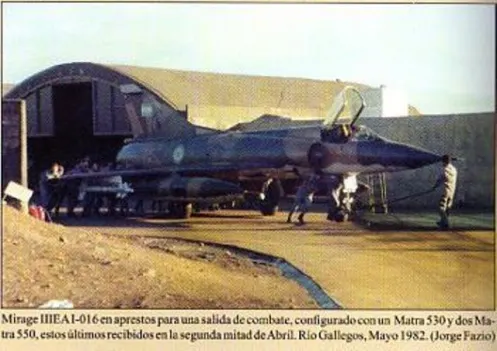
If that is true only 22 Magic now I think I start to understand, the FAA had so few Magic that they were assigned to the Dagger and Mirage III, so the A-4Cs were used as attackers, so that was a big problem in my opinion If Argentina would have had more Magic let us say 100 or 200 Magic and have been tested the A-4C with Magic in my opinion the war would have been different the Harriers were the key to the victory, No harriers and the FAA would have had air superiority and the disembark would had failed.
The irrefutable proof that the powerful aircraft carrier of the British Navy was hit by the Argentine air force, in the testimony of one of its attackers, the then Second Lieutenant Gerardo Isaac. El Halcón, interviewed by the war correspondent in Malvinas Nicolás Kasanzew, offers a vibrant, revealing and detailed account of that feat.
Camera and editing, Sil Bonfietti. Postproduction, Niki Kasanzew.
Chapters
00:00 - Introduction
01:06 - Preparations for the attack
01:47 - The launch of the missile
02:03 - Sighting of the aircraft carrier
02:17 - Shooting down Vázquez's plane
03:13 - Explosion of Castillo's plane
04:21 - Return to the meeting point
05:47 - Meeting with Ureña's plane
08:02 - Post-flight report
After a carefully planned operation between the Argentine Navy and Air Force, a missile hit an emblematic British fleet. The second installment of a special on an attack that was never acknowledged by the British: the attack on the HMS Invincible (R05).
Last edited:
Rule of cool
ACCESS: Top Secret
- Joined
- 16 January 2024
- Messages
- 1,917
- Reaction score
- 2,566
No.
There are no records of attack missions by Mirages, A-4s or Daggers that were cancelled, aborted or forced to flee and discard bombs in the face of the presence of Harriers.
The mention that they did not have the peace of mind to come to high altitude and choose a target is absolutely wrong.
The low altitude attack profile was due to the conclusion of the analysis as the only defense against the ships' seacat and seawolf defense systems. The low flight profile in the final leg of the attack was to avoid and reduce the radar horizon. and response time of ships' combat stations.
This is stated in all the literature and testimonies
No one denies the number of air-to-air kills by Harriers. But almost 100% of them occurred after the Argentines had already infiltrated the defense perimeter and launched their bombs.
The Task Force went south with 3 Type 42s, Sheffield was lost on the 4th day of fighting and Glasgow withdrew heavily damaged 8 days later leaving only Coventry available for 9 or 10 days when Exeter arrived. There were then 2 Type 42s for 3 days until Coventry was sunk, then Cardiff and Bristol arrived the next day.
Leaving aside the Sea Dart on the Invincible the Type 42/82 hardly provided comprehensive missile coverage for the duration of the conflict. There were 3 for a few days at the start and from May 26 onwards, but at the peak of the air fighting there were only 1 or 2, so this isn't really a 'defence perimeter' and there were large gaps devoid of SAM cover, particularly over land. Your use of the term 'infiltrate' describes accurately what the Argentines had to do because the rest of the airspace was covered by Sea Harriers, filling in the gaps in SAM coverage.
- Joined
- 27 September 2006
- Messages
- 6,421
- Reaction score
- 6,837
The Exocet strike which sank Atlantic Conveyor and the later raid which killed the Welsh Guards on Sir Galahad were unfortunate exceptions when one considers how many landing ships and civilian support ships were engaged in the operation.
I am not clear why more were not destroyed but the disruptive effect of ships with AA, shore based Rapier AA and Harrier patrols may have had something to do with it . Or maybe Argentine pilots prefered to sink warships.
I am not clear why more were not destroyed but the disruptive effect of ships with AA, shore based Rapier AA and Harrier patrols may have had something to do with it . Or maybe Argentine pilots prefered to sink warships.
Information about French AAMs here.
Magic 1 seems to have been in-between AIM-9B and AIM-9L.
Magic 1 seems to have been in-between AIM-9B and AIM-9L.
Last edited:
Rule of cool
ACCESS: Top Secret
- Joined
- 16 January 2024
- Messages
- 1,917
- Reaction score
- 2,566
I am not clear why more were not destroyed but the disruptive effect of ships with AA, shore based Rapier AA and Harrier patrols may have had something to do with it . Or maybe Argentine pilots prefered to sink warships.
One of the great but underappreciated advantages of San Carlos was that it was surrounded by quite steep hills some 700' high. The southern arm these 700' peaks are less than 7km apart (34 seconds flying time at 400 knots), at the mouth a touch over 5km (24 seconds) apart and the northern arm less than 3km (14 seconds) apart.
Attack aircraft approaching from Falkland Sound would have to fly at less than 100', through the gunline of angry warships, pop up to 800'+, immediately dive back down to 100', find a target and turn to line up to attack it while under a hail of gunfire and SAMs before escaping again perhaps with another climb to 800'. Compared to that saga it's not surprising that many pilot's first brush with high intensity combat led them to attack the warships in Falkland Sound, they would have looked like a tough enough target. However, as the extraordinary photos show, they soon entered San Carlos and clipped ship's radars with their still-attached drop tanks among other amazing feats of flying that would look totally in character in a Top Gun movie.
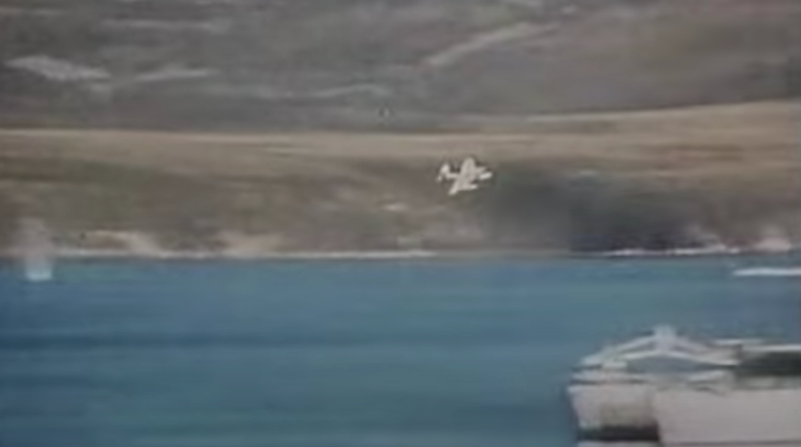
Scott Kenny
ACCESS: USAP
- Joined
- 15 May 2023
- Messages
- 11,737
- Reaction score
- 14,524
Hrm. I was under the impression that the Harriers were instrumental in getting the attacking Argentine planes (sorry, not going to use FAA since there was the Fleet Air Arm on the UK side as well) to fly low and too fast for the bombs to fuze correctly.
Was this not correct?
Was this not correct?
Manuducati
ACCESS: Secret
- Joined
- 25 November 2020
- Messages
- 336
- Reaction score
- 1,073
The irrefutable proof that the powerful aircraft carrier of the British Navy was hit by the Argentine air forc
Where do you see any evidence of that?
That story would have been somewhat believable forty years ago... But with all reports since that, it is now accepted that the Argentinians never hit or even came close to the HMS Invicible.
A-4 pilots failed to identify their intended target and went for the HMS Glasgow instead (understandable especially from rear angle, when you are flying a very dangerous mission, a few meters above the ocean, while being shot at, in a suboptimal weather).
Or for some reason the British are lying about this for decades, while admitting numerous losses of other ships, and not a single member of the Royal Navy (be it from the Invicible or from the escort), or worker from the shipyard where the carrier would have had to be thoroughly repaired, and none of the many journalists on board (a profession not exactly known for its ability to keep secrets) has ever spilled the beans?
Would you rather trust two pilots under high level of stress, without any evidence, or hundreds of sailors (more than 1000 on the Invicible alone) and dozens of journalists on board?
F-14ATomcat
ACCESS: Secret
- Joined
- 26 May 2024
- Messages
- 480
- Reaction score
- 915
In war you have claims and counter claims, I just presented what the Pilots say up to this day, just that, if you believe the opposite it does not mean that in Spanish Language press or Argentina will have the same opinion.Where do you see any evidence of that?
That story would have been somewhat believable forty years ago... But with all reports since that, it is now accepted that the Argentinians never hit or even came close to the HMS Invicible.
A-4 pilots failed to identify their intended target and went for the HMS Glasgow instead (understandable especially from rear angle, when you are flying a very dangerous mission, a few meters above the ocean, while being shot at, in a suboptimal weather).
Or for some reason the British are lying about this for decades, while admitting numerous losses of other ships, and not a single member of the Royal Navy (be it from the Invicible or from the escort), or worker from the shipyard where the carrier would have had to be thoroughly repaired, and none of the many journalists on board (a profession not exactly known for its ability to keep secrets) has ever spilled the beans?
Would you rather trust two pilots under high level of stress, without any evidence, or hundreds of sailors (more than 1000 on the Invicible alone) and dozens of journalists on board?
If you do not believe it, it is fine, if in England they believe that what you do it is fine too, I am not judging, I am just presenting what the Pilots say in Spanish, (which is my native language) and what books they have written.
You can say their claims are false, that is fine, however that will not stop Argentina`s pilot to claim what they claim, same is other wars, in History as in democracy you have different versions, it is a personal Choice what you want to believe if you were not witness of the event.
Last edited:
F-14ATomcat
ACCESS: Secret
- Joined
- 26 May 2024
- Messages
- 480
- Reaction score
- 915
First Lieutenant Carlos "Charly" Perona says the same thing about Magic 1Information about French AAMs here.
Magic 1 seems to have been in-between AIM-9B and AIM-9L.
For a long time there was speculation about Soviet involvement in the Falklands War. On one side, there were the United States and NATO supporting the United Kingdom with weapons, fuel and information. Argentina was quite alone in the conflict and needed support. On the 40th anniversary of the war, we spoke to a specialist to unravel the USSR's involvement in the South Atlantic conflict.
The testimony of Horacio Mir González, a pilot and war veteran who fought in the Malvinas, allows us to learn a story that connects our country with the State of Israel. In April 1982, as a captain in the Argentine Air Force, Horacio was assigned to the Sixth Air Brigade in Tandil. His unit was deployed in the south of our country and its members carried out true feats of bravery and courage during the war. A fact: the fighter plane with which they managed to cause great damage to the British in the Malvinas was the M5 Dagger, a Mirage plane model that had been acquired by Argentina from Israel towards the end of the 1970s. In order to be trained, the pilots and mechanics had to move to the Sinai Peninsula.
Last edited:
Manuducati
ACCESS: Secret
- Joined
- 25 November 2020
- Messages
- 336
- Reaction score
- 1,073
In war you have claims and counter claims, I just presented what the Pilots say up to this day, just that, if you believe the opposite it does not mean that in Spanish Language press or Argentina will have the same opinion.
If you do not believe it, it is fine, if in England they believe that what say you do it is fine too, I am not judging, I am just presenting what the Pilots say in Spanish, (which is my native language) and what books they have written.
You can say their claims are false, that is fine, however that will not stop Argentina`s pilot to claim what they claim, same is other wars, in History as in democracy you have different versions, it is a personal Choice what you want to believe.
You are claiming those are "irrefutable proof". They are simply not. That's the point I want to make clear.
No gun camera from the A-4 or photography by the pilot (the latter would be a surprisingly difficult task), no a single photography (beside obvious fake ones) or report of the claimed damage leaked from the British side (despite potentially hundreds of witnesses, including journalists).
I have no cultural bias to believe either the Argentinian or British version.
During WWII, Allies were able to hide (momentarily) the fiasco of Exercice Tiger, a D-Day rehearsal that was met by a disastrous fate in April 1944. Yet the story was declassified in August 1944. Too many witnesses, too many losses. The Invicible being heavily damaged (or even sinked, as some Argentinians keep claiming) wouldn't be different.
I just choose to follow the evidences (or lack of).
F-14ATomcat
ACCESS: Secret
- Joined
- 26 May 2024
- Messages
- 480
- Reaction score
- 915
that is fine with me, I am not interested in opinions, all we have an opinion, what you chose to believe or I chose to believe is no evidence, I was thousands of miles when that happened, I was not there, and Governments have policies (call that Propaganda they also have censorship, you claim by default British have no censorship and no Propaganda you can believe it, is Argentina different? no probably they also have propaganda and censorship.You are claiming those are "irrefutable proof". They are simply not. That's the point I want to make clear.
No gun camera from the A-4 or photography by the pilot (the latter would be a surprisingly difficult task), no a single photography (beside obvious fake ones) or report of the claimed damage leaked from the British side (despite potentially hundreds of witnesses, including journalists).
I have no cultural bias to believe either the Argentinian or British version.
During WWII, Allies were able to hide (momentarily) the fiasco of Exercice Tiger, a D-Day rehearsal that was met by a disastrous fate in April 1944. Yet the story was declassified in August 1944. Too many witnesses, too many losses. The Invicible being heavily damaged (or even sinked, as some Argentinians keep claiming) wouldn't be different.
I just choose to follow the evidences (or lack of).
I said these are just claims and counter claims, let us leave here, you will not change what the Pilots claim regardless you believe what you believe nor I will Change what England officially says it did happen these are just claims and counter claims
Last edited:
carvalho2008
Naval alternative projects
- Joined
- 20 November 2015
- Messages
- 452
- Reaction score
- 500
This website here in Brazil has a very interesting study on why the Argentine bombs did not explode. It's a very in-depth study in 8 parts
 Parte 1- Introdução
Parte 1- Introdução
Parte 2 – Vetores e armamentos
Parte 3 – As Táticas
Parte 4 – Espoletas
Parte 5 – O primeiro ataque
Parte 6 – ‘Bomb Alley’
Parte 7 – O dia da Pátria
Parte 8 – Esforço hercúleo
Parte 9 – Mitos sobre as bombas argentinas nas Malvinas

Malvinas 38 anos: por que as bombas não explodiram? - Poder Aéreo – Aviação, Forças Aéreas, Indústria Aeroespacial e de Defesa
Há 35 anos argentinos e britânicos se enfrentaram na gélidas águas do Atlântico Sul para disputar a posse das ilhas Malvinas (Falklands, como se referem os britânicos).
www.aereo.jor.br
Parte 2 – Vetores e armamentos
Parte 3 – As Táticas
Parte 4 – Espoletas
Parte 5 – O primeiro ataque
Parte 6 – ‘Bomb Alley’
Parte 7 – O dia da Pátria
Parte 8 – Esforço hercúleo
Parte 9 – Mitos sobre as bombas argentinas nas Malvinas
Last edited:
F-14ATomcat
ACCESS: Secret
- Joined
- 26 May 2024
- Messages
- 480
- Reaction score
- 915
I will leave it here, I am not interested in change the topic. regardsOh drats. If that thread goes in the direction of the (debunked) HMS Invincible claims, I'm out of it. Bye.
(MYTH) The bombs did not explode because they were dropped at a low altitude.
(ANSWER) The Argentine Air Force military personnel had full technical knowledge of the limitations of the bomb launch envelope (including computer calculations with the launch parameters). In fact, these limitations were due to the original characteristics of the fuses, whose times were based on safety concepts for the launching aircraft (according to reports from Argentine military personnel, carrying out suicide missions never occurred to them). At the beginning of the conflict, bombs (Expal 250 kg) were dropped without modified fuses that did not actually explode (this is the case of the attack on HMS Glamorgan and the bomb that lodged in the cargo compartment of the Argentine merchant ship ELMA Formosa, which was attacked by mistake – the fuse did not have time to arm the bomb).
Spanish-made BRP-250 bomb dropped by mistake against the Argentine-flagged merchant ship ELMA Formosa. Note the remains of the parachute on the tail. The bomb was disarmed and it was noted that the fuse had not armed the bomb, as it had been dropped very close to the ship. PHOTO: 3040100.com.ar
The fuses were modified so that the bombs would explode even if dropped at low altitude. Some bombs with modified fuses did not actually explode after being dropped (such as the one dropped against the frigate HMS Argonaut) and the causes for this are definitely not related to the height of the drop. There are indications that the combination of very low temperatures and the salt in the sea water (due to extremely low flights) compromised the fuse mechanism. Another possibility raised was the lack of stricter quality control in the manufacturing and adaptation process of the electronic Kappa fuses (civilians and military personnel alternated day and night in the manufacturing process of the fuses and ignored safety procedures to speed up the process).
Computer calculations made by the Argentines determining the parameters for launching bombs in naval attack tactics at extremely low altitudes. PHOTO: FAA
(MYTH) If the Argentines had realized the problem of bomb detonation earlier, British losses could have been greater.
(ANSWER) The Argentines (especially the FAA military), throughout the conflict, were fully aware of the difficulties of executing bombing tactics at extremely low altitudes and the limitations of their weapons. There is no evidence to support the thesis that some of these problems were recognized belatedly by them.
(MYTH) Launching dumb bombs against modern (for the time) Royal Navy ships was suicide.
(ANSWER) The technique of launching bombs at extremely low altitudes was a type of tactic that the Royal Navy had not foreseen and, therefore, was not fully prepared to deal with this threat. The only effective way to shoot down enemy aircraft at extremely low altitudes was the GWS-25 Seawolf system, which had been developed to shoot down sea-skimming missiles such as the Exocet. However, of all the escorts the Royal Navy sent to the South Atlantic, only two units had this system (the Type 22 frigates). After the war, the Royal Navy prioritized the installation of CIWS systems to counter the threat of sea-skimming missiles and low-altitude naval attacks.
damage to the Broadsword’s flight deck
One of the unexploded bombs hit the frigate HMS Broadsword (Type 22). The photo above shows the damage the bomb caused to the flight deck. The Lynx’s nose was torn off by the bomb’s passage. The Broadsword was one of only two Royal Navy escorts sent to the South Atlantic that had a system that was effective against low-altitude aircraft. PHOTO: UK DoD
(MYTH) The British were aware of the problem with the fuses of low-altitude bombs and did not disclose this information in the media so as not to alert the Argentines.
(ANSWER) Regardless of whether or not the British were aware of the issue of low-altitude bombs and their relationship with fuses, this made no difference to the Argentines because they were fully aware of the limitations and difficulties of these attack profiles and the weapons they used even before the first bomb was tested on land.
A starboard view of the chimney of the frigate HMS Plymouth damaged by a bomb dropped by IAI Dagger fighters. This was another bomb that hit the ship and did not detonate. PHOTO: UK DoD
(MYTH) The fuse of the bomb dropped against the frigate HMS Antelope had been assembled incorrectly by FAA experts.
(ANSWER) There is no evidence to support this claim. The investigation conducted by the Royal Navy and the testimony of the petty officer who was on duty at the bomb disposal (see part 6) do not support this hypothesis.
(MYTH) If all the bombs dropped had exploded, this would have forced the withdrawal of the force
-British task
(ANSWER) This is a nonsensical statement. Most of the attacks against British ships occurred during or after the bulk of the British landing on the island. It would make no sense for the task force to retreat with most of the ground forces already on the ground.
One of the two MK-17 bombs that lodged inside the frigate HMS Argonaut did not explode. The bomb in the photo above hit the ship near the boiler. To prevent it from rolling around, it was propped up with a mattress (right above the bomb). The frigate was left without power and maneuverability, and was anchored in the San Carlos Strait for emergency repairs for five days. PHOTO: http://mentalcrumble.com
(MYTH) The Argentine naval aviators were more successful because they were more familiar with naval air actions.
(ANSWER) This is a relative statement. Much of the naval aviators' success came from actions using Exocet missiles. This was a modern weapon, suitable for naval warfare, and the launch platform (the Super Etendard jet) was a much more advanced aircraft than the FAA fighters and the Navy's own A-4Qs. There are specific issues such as the attack on the frigate HMS Ardent. On that occasion, the Navy's A-4s attacked a ship that had been seriously damaged by two previous FAA attacks. During the attack, the Navy's Skyhawks rose well above the height considered safe so that they could release their bombs (bombs with fin braking require greater launch heights than those braked by parachutes). This allowed the fuse to be correctly activated and the aircraft was not harmed because the FAA planes had already destroyed the Seacat missile launcher (the ship's main anti-aircraft defense)

Malvinas 35 anos: por que as bombas não explodiram? (PARTE 9) - Poder Aéreo – Aviação, Forças Aéreas, Indústria Aeroespacial e de Defesa
por Guilherme Poggio Há 35 anos argentinos e britânicos se enfrentaram na gélidas águas do...
www.aereo.jor.br
Broadsword was one of THREE Sea Wolf equipped ships sent to the South Atlantic during the course of the campaign.The Broadsword was one of only two Royal Navy escorts sent to the South Atlantic that had a system that was effective against low-altitude aircraft.
The Type 22 frigates Brilliant and Broadsword, which were part of the initial deployment, were joined by the Sea Wolf equipped Broad Beamed Leander Andromeda. She left Devonport on 10 May, arrived of Ascension on 18th and reached the Falklands on 25th.
In April 1982 there were only 3 Type 22 in commission. The third vessel, Battleaxe, had shaft problems and was under repair, until deployed south in August as an escortvto Illustrious, while the final Batch 1 ship didn't commission until July 1982.
Andromeda was the first Leander Sea Wolf conversion and the only one available in April 1982. The second conversion didn't complete until July 1982.
Scott Kenny
ACCESS: USAP
- Joined
- 15 May 2023
- Messages
- 11,737
- Reaction score
- 14,524
Disagree with that.(MYTH) If all the bombs dropped had exploded, this would have forced the withdrawal of the force
-British task
(ANSWER) This is a nonsensical statement. Most of the attacks against British ships occurred during or after the bulk of the British landing on the island. It would make no sense for the task force to retreat with most of the ground forces already on the ground.
Troops with no supplies will not be able to fight for long, true.
How many ships is the UKRN willing to lose to keep them supported? That is the question, and I'd be willing to bet it'd be less than twice what were damaged and lost.
Magic 1 was in between the AIM-9H/J and AIM-9L. As I understand it, the cooled seeker was superior to the H/J.Magic 1 seems to have been in-between AIM-9B and AIM-9L.
Magic’s design was optimized for dogfights, with greater maneuverability and a better off boresight engagement capability than all Sidewinders until AIM-9X, giving the pilot more launch opportunities and a higher kill probability when firing “snapshots”.
So basically before the merge, AIM-9L was better (on paper) thanks to its head-on firing capability. After the merge, Magic 1 would be equal and possibly more effective in a dogfight. In practice, Sea Harrier pilots avoided head on shots as they didn’t have full confidence in the head on engagement mode and those shots would be easier to avoid, so the missiles were evenly balanced.
Argentine pilots had an incentive to blame their lack of success on the AIM-9L, but it wasn’t a super weapon. Obviously it didn’t help that Argentina had so few Magics, and had to rely on older Sidewinder and Shafrir AAMs.
P.S. Magic 1 had one main weakness, shared with the AIM-9H/J, which was its infrared fuse. This could be triggered prematurely when the target used afterburner… this was a problem for South African and Iraqi Mirages against Migs, F-4s, Tomcats etc, but would not have been a problem against Harriers. Moreover the Harrier was uniquely vulnerable to infrared-guided missiles due to its exhaust duct location, which was much farther forward than most fighters, meaning even a close miss would likely damage vital parts of the engine or tailplane.
Last edited:
- Joined
- 27 September 2006
- Messages
- 6,421
- Reaction score
- 6,837
Not wishing to inflame the question of HMS Invincible I have great sympathy with the Argentine pilots trying to distinguish British ships at high speed in combat.
The funnels on Invincible could easily be confused with both container ships like Atlantic Causeway or the big funnels on Bristol or a County for example. From some angles she did not look like a carrier.
It is part of all conflicts for both sides to stand by the claims made by their people.
Out of respect for the brave pilots of both nations let us agree to disagree.
The funnels on Invincible could easily be confused with both container ships like Atlantic Causeway or the big funnels on Bristol or a County for example. From some angles she did not look like a carrier.
It is part of all conflicts for both sides to stand by the claims made by their people.
Out of respect for the brave pilots of both nations let us agree to disagree.
F-14ATomcat
ACCESS: Secret
- Joined
- 26 May 2024
- Messages
- 480
- Reaction score
- 915
Broadsword was one of THREE Sea Wolf equipped ships sent to the South Atlantic during the course of the campaign.
The Type 22 frigates Brilliant and Broadsword, which were part of the initial deployment, were joined by the Sea Wolf equipped Broad Beamed Leander Andromeda. She left Devonport on 10 May, arrived of Ascension on 18th and reached the Falklands on 25th.
In April 1982 there were only 3 Type 22 in commission. The third vessel, Battleaxe, had shaft problems and was under repair, until deployed south in August as an escortvto Illustrious, while the final Batch 1 ship didn't commission until July 1982.
Andromeda was the first Leander Sea Wolf conversion and the only one available in April 1982. The second conversion didn't complete until July 1982.
Disagree with that.
Troops with no supplies will not be able to fight for long, true.
How many ships is the UKRN willing to lose to keep them supported? That is the question, and I'd be willing to bet it'd be less than twice what were damaged and lost.
In my defense this is what the Brazilian article says, I can read Portuguese (Portuguese is basically a funny Spanish for us who speak Spanish) but for English speakers you will need a translator so I did it so you can read.
This elements are totally new topics for me, feel free to google translate the article

Malvinas 38 anos: por que as bombas não explodiram? - Poder Aéreo – Aviação, Forças Aéreas, Indústria Aeroespacial e de Defesa
Há 35 anos argentinos e britânicos se enfrentaram na gélidas águas do Atlântico Sul para disputar a posse das ilhas Malvinas (Falklands, como se referem os britânicos).
www.aereo.jor.br
Any way I know the website and I have read it before one of the best Brazilian websites in military topics
F-14ATomcat
ACCESS: Secret
- Joined
- 26 May 2024
- Messages
- 480
- Reaction score
- 915
Which was the best fighter in the Falklands War? Was the Harrier really that superior to the Mirage? In this video we will explain everything!
In exclusive statements to Aviación Militar, retired Argentine Air Force brigadier, Falklands War veteran and Mirage pilot, Carlos Perona, said: “We were very well trained, the training we had in 1978 because of the issue with the Chileans was very useful to us; what changed for us was the panorama. The Mirage is not an aircraft to intercept at 800 kilometers, it is for defense within the order of 400 kilometers at most, precisely because it does not have in-flight refueling, that was one of our great shortcomings.”
View: https://www.youtube.com/watch?v=V7N4B84PPPk
Basically he says It was the AAM what gave the superiority to the harrier at low altitudes, but would they had another missile, perhaps the Mirage III would had exploited its superior speeds, he also mentions they were surprised by the AIM-9L delivery by the USA
another good links

 malvinasguerraaerea.blogspot.com
malvinasguerraaerea.blogspot.com

 malvinasguerraaerea.blogspot.com
malvinasguerraaerea.blogspot.com
In exclusive statements to Aviación Militar, retired Argentine Air Force brigadier, Falklands War veteran and Mirage pilot, Carlos Perona, said: “We were very well trained, the training we had in 1978 because of the issue with the Chileans was very useful to us; what changed for us was the panorama. The Mirage is not an aircraft to intercept at 800 kilometers, it is for defense within the order of 400 kilometers at most, precisely because it does not have in-flight refueling, that was one of our great shortcomings.”
Basically he says It was the AAM what gave the superiority to the harrier at low altitudes, but would they had another missile, perhaps the Mirage III would had exploited its superior speeds, he also mentions they were surprised by the AIM-9L delivery by the USA
another good links

Malvinas : IA-58 Pucará en la BAM Cóndor
IA-58 Pucará de la BAM Cóndor

IA-58 Pucará en Malvinas : encuentro con el enemigo
Los Pucará se encuentran con el enimgo
Last edited:
alejandrogrossi
ACCESS: Secret
- Joined
- 20 September 2019
- Messages
- 268
- Reaction score
- 447
F-14 tomcatWhich was the best fighter in the Falklands War? Was the Harrier really that superior to the Mirage? In this video we will explain everything!
In exclusive statements to Aviación Militar, retired Argentine Air Force brigadier, Falklands War veteran and Mirage pilot, Carlos Perona, said: “We were very well trained, the training we had in 1978 because of the issue with the Chileans was very useful to us; what changed for us was the panorama. The Mirage is not an aircraft to intercept at 800 kilometers, it is for defense within the order of 400 kilometers at most, precisely because it does not have in-flight refueling, that was one of our great shortcomings.”
View: https://www.youtube.com/watch?v=V7N4B84PPPk
Basically he says It was the AAM what gave the superiority to the harrier at low altitudes, but would they had another missile, perhaps the Mirage III would had exploited its superior speeds, he also mentions they were surprised by the AIM-9L delivery by the USA
another good link

Malvinas : IA-58 Pucará en la BAM Cóndor
IA-58 Pucará de la BAM Cóndormalvinasguerraaerea.blogspot.com

IA-58 Pucará en Malvinas : encuentro con el enemigo
Los Pucará se encuentran con el enimgomalvinasguerraaerea.blogspot.com
That frase it´s a perfect resume: "The Mirage is not an aircraft to intercept at 800 kilometers, it is for defense within the order of 400 kilometers at most, precisely because it does not have in-flight refueling, that was one of our great shortcomings.”
They not have enough fuel. They have 5 minutes to stay over the Islands at hight altitud.
We need this
on this

and this

But no M-V or M-III, dont have IFR probe in 82.
And then we need this

F-14ATomcat
ACCESS: Secret
- Joined
- 26 May 2024
- Messages
- 480
- Reaction score
- 915
I agree Alejandro.F-14 tomcat
That frase it´s a perfect resume: "The Mirage is not an aircraft to intercept at 800 kilometers, it is for defense within the order of 400 kilometers at most, precisely because it does not have in-flight refueling, that was one of our great shortcomings.”
They not have enough fuel. They have 5 minutes to stay over the Islands at hight altitud.
We need this

on this

and this

But no M-V or M-III, dont have IFR probe in 82.
And then we need this

I have a friend in Buenos Aires, some day I hope I can visit Argentina, in the 1990s, me and a friend of mine, we used to go to Soda Estereo`s concerts in Mexico, we met a really beautiful lady at the Argentine embassy in Mexico city, I still can remember her name Monica Poggi, my friend did want to go to Argentina too, but at the end he married a Colombian lady and he lives in Colombia.
It is sad how Argentina from having the most advanced aerospace in Latin America has not been able to develop its full potential now, in 2025, Pulqui, and the IA-63 are one of the few aircraft built in your land that were trend setters in Latin america
CBA -123 in a way was a product of the malvinas war, since made Brazil a closer friend to Argentina, the USA gave AIM-9Ls to England but paid that mistake with Mercosur and a no to the FTA proposed by Bush
There were rumors for a while that IA-63 could be built in Mexico in 2023.
Any way we need to improve our technology.
Saludos to the great Land of Argentina.
Peace should prevail, but is so nice read our history, and this topic let us learn what were our mistakes.
Last edited:
F-14ATomcat
ACCESS: Secret
- Joined
- 26 May 2024
- Messages
- 480
- Reaction score
- 915
It is many factors.The reality is that Argentina did not need an alternative fighter or missiles to defeat the UK, all they really needed where working fuzes and they would have won...
The first mistake Argentina made was Argentina needed its own fighter.
I mean have the ability to make it domestically
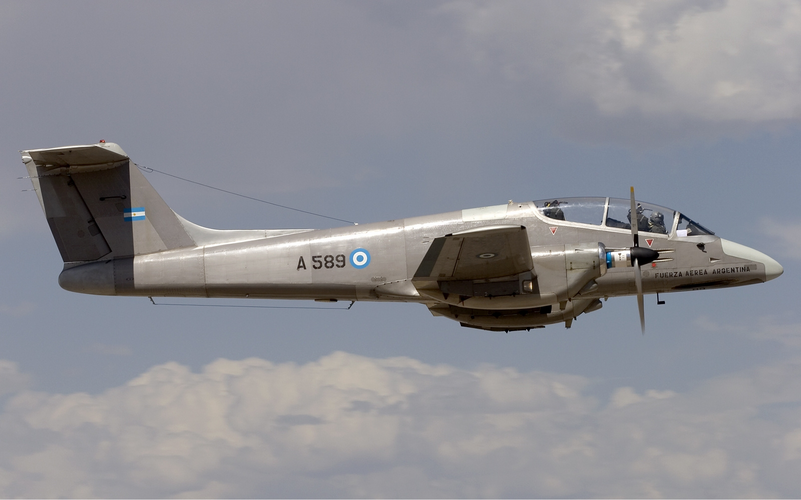
As good as the Pucara was, it was too slow and not as capable as the Harrier.
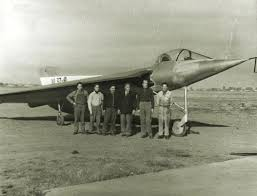
If Argentina would had been able to build the IAe37 and its further development Argentina would have had a fighter as capable as the Mirage.
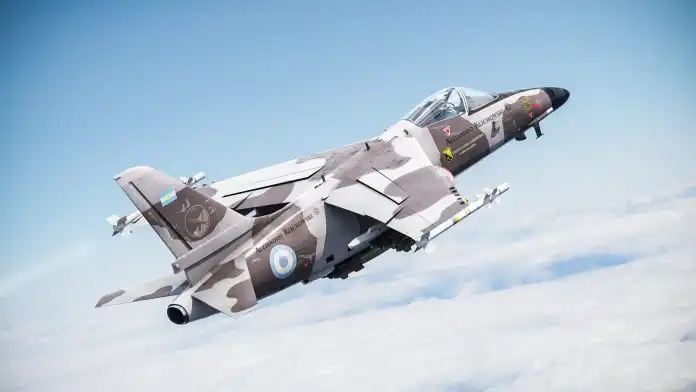
Something Similar to the IA-68 would have been a good A-4 local version.
Argentina needed something like the Condor missile
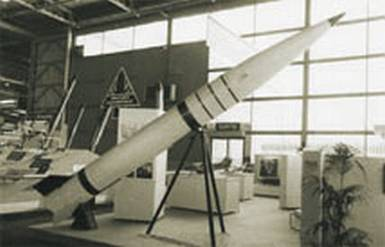
I mean the reality was England was a military power, Argentina was not ready.
It was good in one way, they did not go into more militaristic ways, but definitively Argentina could had become a nuclear power, built fighters and even Missiles, even a nuclear submarine, but that was going to be really problematic, I mean if they really would had wanted they could have become a nuclear power.
At the end peace has prevailed, but it is because in Latin america we have understood being a nuclear power means being also a nuclear target
Rule of cool
ACCESS: Top Secret
- Joined
- 16 January 2024
- Messages
- 1,917
- Reaction score
- 2,566
Then there is the issue of extending range. I note that Learjet 24s were in auxiliary service. Converting a few Lears into hose-and-drogue IFR platforms would seem to make sense. Alternatively, if you are willing to back-date history, I'd suggest FMA having pinched the conformal fuel tank concept from the 1974 Strike Eagle and then have those CFTs scabbed on to the Skyhawks.
The Learjet is too small to be a useful tanker, it couldn't carry a meaningful amount of transfer fuel.
A better makeshift would be fitting the Navy's buddy IFR pods to the Air Force Canberras. This isn't a patch on getting more KC130s let alone a big, airliner derived tanker like B707s, but it would be better than nothing and give Argentina a few more tanker options.
F-14ATomcat
ACCESS: Secret
- Joined
- 26 May 2024
- Messages
- 480
- Reaction score
- 915
well remember this is just a mental exercise, the real History is they lost.Ignoring all of the inherent development risks, I fail to see how locally-built aircraft would have changed the situation. Argentina would almost certainly have still been dependent upon foreign suppliers of engines and other equipment. If, as you suggest, a back-dated IA-68 AAA had been designed, what engine would power it? The RW project was to have an afterburning GE 404 (or RB.199). What would be the equivalent powerplant in, say, 1976?
Were Argentina determined to pursue its annexation-by-force of the Malvinas circa 1982, might I suggest that updating and standardizing Argentine A-4s would have been a less grandious approach? Perhaps start with the IDF's A-4H (better avionics and 30 mm DEFAs), then add more pylons and targeting radar.
Then there is the issue of extending range. I note that Learjet 24s were in auxiliary service. Converting a few Lears into hose-and-drogue IFR platforms would seem to make sense. Alternatively, if you are willing to back-date history, I'd suggest FMA having pinched the conformal fuel tank concept from the 1974 Strike Eagle and then have those CFTs scabbed on to the Skyhawks.
I was saying would they had develop more their aviation, that would had meant less vulnerabilities in terms of embargo.
Even today Argentina has an arms embargo.
Local manufacturing means they would had designed weapons for the Malvinas/Falkands war.
And technically any war requires preparation.
Argentina was ill prepared, but technically for a while they had the most advanced aerospace Industry in the whole of Latin America, it was until the year 2000 that Brazil took over with Embraer, but previous to 1982 and specially from 1940 to 1960 Argentina had the most advanced aviation industry other than the USA and Canada in the Americas
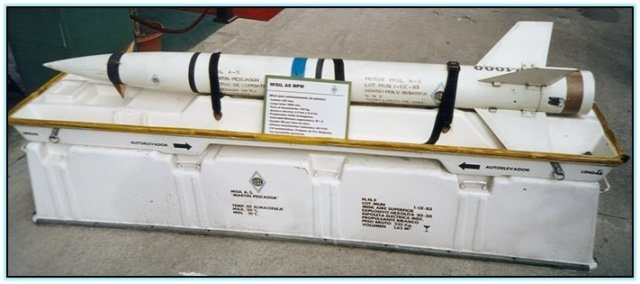
Description. Martin Pescador (Kingfisher) is a short-tomedium-range supersonic air-to-surface missile able to beused against land or sea targets. It was intended to replaceArgentina's AS.11 and AS.12 inventories.Sponsor. Argentinian Defense Ministry.Contractors. Instituto de Investigaciones Cientificas yTecnicas de las Fuerzas Armadas (CITEFA), Zufriategui4380, 1603 Villa Martelli, Provincia de Buenos Aires,Argentina.Status.
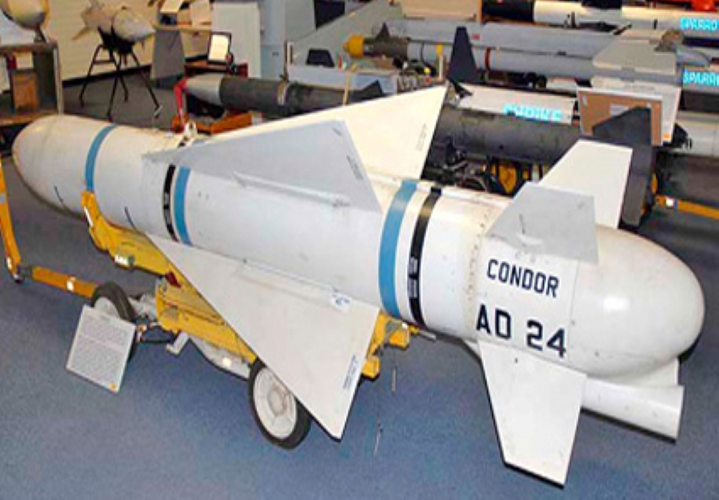
This paper covers the history of the Argentine Cóndor I and Cóndor II missiles: their origins, their development, and the circumstances that led to their cancellation. The Cóndor I and II rockets were developed and built by the Argentine Air Force between 1979 and 1990. From the beginning of the 1960s to the end of the 1980s, Argentina was the only Latin American country to accomplish significant developments in rocketry.
https://www.researchgate.net/publication/308890406_THE_CONDOR_PROJECT
Last edited:
1635yankee
Recovering aeronautical engineer
- Joined
- 18 August 2020
- Messages
- 557
- Reaction score
- 774
The Argentinians complained that the US didn't provide the information needed for the fuzes on the US-sourced weapons to be set for use from the extreme low altitudes at which the Argentinians were dropping them.
Argentina's invasion[1] of the Falklands[2] was, unsurprisingly, political. It's timing was also forced by domestic political considerations[3]; had the Argentinian government waited for a few months, it's not inconceivable that the British military would not have the amphibious lift or carriers needed to evict the Argentinians.
What kind of attack aircraft they needed to operate from airfield in the Falklands is interesting. One possibility would be Harriers, which would not particularly suffer from the short runway. Another -- possibly more realistic -- would be the Saab Draken. One wonders what the J35XA (export Argentina) would be like...
------
Added in edit
[1] I'm quite sure the Galtieri regime would use a different word.
[2] or Islas Malvinas.
[3] as in the junta was losing control. Even torturing, killing, and kidnapping people who disliked the regime couldn't keep the dissent down forever.
Argentina's invasion[1] of the Falklands[2] was, unsurprisingly, political. It's timing was also forced by domestic political considerations[3]; had the Argentinian government waited for a few months, it's not inconceivable that the British military would not have the amphibious lift or carriers needed to evict the Argentinians.
What kind of attack aircraft they needed to operate from airfield in the Falklands is interesting. One possibility would be Harriers, which would not particularly suffer from the short runway. Another -- possibly more realistic -- would be the Saab Draken. One wonders what the J35XA (export Argentina) would be like...
------
Added in edit
[1] I'm quite sure the Galtieri regime would use a different word.
[2] or Islas Malvinas.
[3] as in the junta was losing control. Even torturing, killing, and kidnapping people who disliked the regime couldn't keep the dissent down forever.
Last edited:
- Joined
- 27 September 2006
- Messages
- 6,421
- Reaction score
- 6,837
As so often with Alt Hist you are in danger of making too many changes and altering the basis for the event you are interested in.
A more successful and stable Argentina in the 1970s could well have built its own aircraft along the lines of India's HF24 or even Sweden's Viggen family. It might also have been able to afford and receive aircraft like the Mirage F1 or Buccaneer or even F4s and A7s.
Unfortunately such an Argentina would not have embarked on a desperate attempt to take the Falklands (Malvinas) in Spring 1982. It would have been much better placed to get the UK to negotiate an agreement about the Islands without war.
A more successful and stable Argentina in the 1970s could well have built its own aircraft along the lines of India's HF24 or even Sweden's Viggen family. It might also have been able to afford and receive aircraft like the Mirage F1 or Buccaneer or even F4s and A7s.
Unfortunately such an Argentina would not have embarked on a desperate attempt to take the Falklands (Malvinas) in Spring 1982. It would have been much better placed to get the UK to negotiate an agreement about the Islands without war.
The Learjet is too small to be a useful tanker, it couldn't carry a meaningful amount of transfer fuel.
A better makeshift would be fitting the Navy's buddy IFR pods to the Air Force Canberras. This isn't a patch on getting more KC130s let alone a big, airliner derived tanker like B707s, but it would be better than nothing and give Argentina a few more tanker options.
A Learjet 35 has over 4.000 liters of fuel in its tanks, it could use half of this to top up strike aircrafts in route to their targets.
A Skyhawk has an internal fuel capacity of around 3.000 liters.
Last edited:
Rule of cool
ACCESS: Top Secret
- Joined
- 16 January 2024
- Messages
- 1,917
- Reaction score
- 2,566
A Learjet 35 has over 4.000 liters of fuel in its tanks, it could use half of this to top up strike aircrafts in route to their targets.
A Skyhawk has an internal fuel capacity of around 3.000 liters.
While a tactical aircraft can attach a buddy pod to any pylon plumbed for a drop tank and become a tanker a Learjet will need to have engineering work done to make it into a tanker. A Learjet is not a suitable aircraft to undertake such work on, any number of ex airliners are far more suitable.
Learjet would be in fact one of the most suitable aircrafts for this type of modification. It has wing tip fuel tanks.
View: https://www.youtube.com/watch?v=3FwQwpolNQA

So no big structural modifications at the airframe, just add two drogues at the end of the wings. And then you can put also some colapsible ferry tanks inside the cabin.


So no big structural modifications at the airframe, just add two drogues at the end of the wings. And then you can put also some colapsible ferry tanks inside the cabin.

Last edited:
F-14ATomcat
ACCESS: Secret
- Joined
- 26 May 2024
- Messages
- 480
- Reaction score
- 915
Well it is more complex, all dictartorships in South america were supported by the USA.That was rather the point that I was trying to counter. Designing and building your own airframe is one thing, but by the 1970s, becoming fully independent of non-domestic suppliers was becoming impossible for all but the superpowers.
You mentioned Canada ... and there is a case-in-point. Canada showed that it was quite capable of designing and building its own fighter airframes and the engines to power them (CF-100/Orenda 11 and CF-105/Iroquois). But, even still, much of Avro Canada's technical talent came from the UK plus the needed weapons, FCS, etc. relied heavily upon US suppliers and/or licenses.
England and Argentina have fought several wars, in 1806, 1807, 1833 (when they expelled Argentina from the Falklands/Malvinas) and 1845, previous to the 1982 war.
Technologically speaking Argentina was ill prepared but Argentina had technology to this day even with arms embargo has technology.
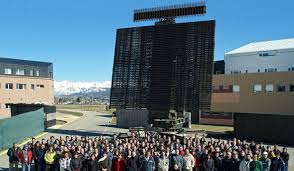
AESA radars by INVAP, designed in Argentina
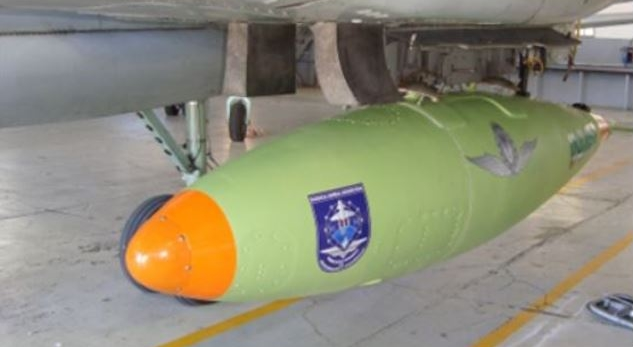
AESA pod for Pucaras
Labala jet engine by Gustavo Labala, made in Argentina
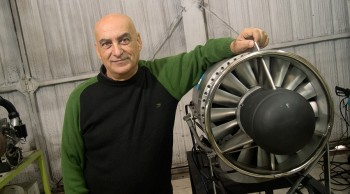

I mean they had technology but their economy can not support a large military budget.
Tronador Space rocket to launch satellites.
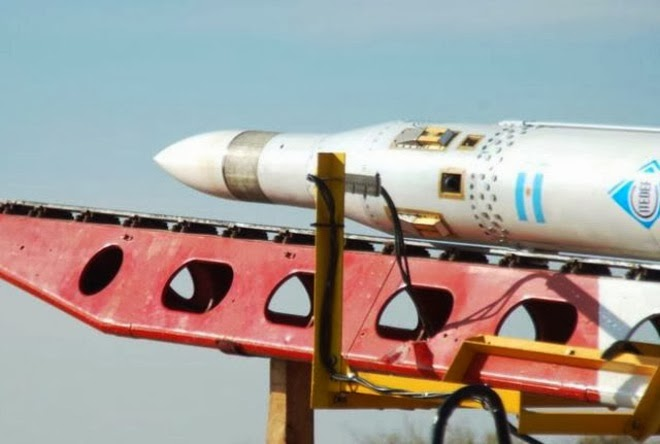

The construction of the “mini” nuclear power plant designed and built in Argentina will end this year with more than 75% of the work completed. This is the Carem 25, a nuclear reactor that, due to its technology, could be exported for millions of dollars, in a world that is increasingly looking at nuclear energy, due to the crisis brought on by the war in Ukraine, and in view of the energy transition

Carem: la construcción de la "mini" central nuclear argentina superó el 75% de la obra - Runrún Eléctrico
El Gobierno aspira a terminar la obra a fines de 2024. El reactor tiene una tecnología que solo realizan tres países. La crisis de Europa y la transición energética abren una oportunidad para la energía nuclear. La construcción de la “mini” central nuclear diseñada y construida en Argentina...
The reality Argentina lost the war due to the fact they did not have a nuclear submarine thus the use of the Aircraft carrier ARA 25 de Mayo was interrupted; so their Skyhawks had to fly from land reducing their range.
Last edited:
alejandrogrossi
ACCESS: Secret
- Joined
- 20 September 2019
- Messages
- 268
- Reaction score
- 447
The Learjet is too small to be a useful tanker, it couldn't carry a meaningful amount of transfer fuel.
A better makeshift would be fitting the Navy's buddy IFR pods to the Air Force Canberras. This isn't a patch on getting more KC130s let alone a big, airliner derived tanker like B707s, but it would be better than nothing and give Argentina a few more tanker options.
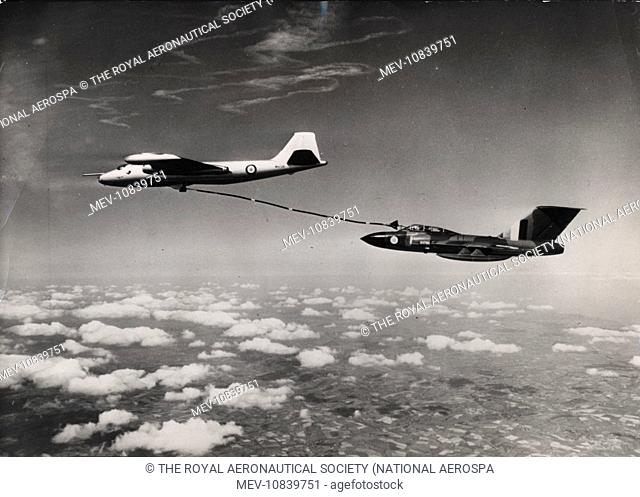
Doing this.
Our Canberra forces have few airframes.
But I like the idea.
But the A-4 can refuel from KC130.
A more fast tanker would be necesary if you have more fats planes.
The only mirage with IFR at that fime was the Mirage F-1AZ of the SAAF
" The F-1A is a simpler, clear-weather derivative of the Mirage F-1C interceptor, optimized for the ground attack role, according to Cmdt Kobus Toerien, an experienced F1-CZ pilot. It was developed in parallel with the F-1C and is aimed at the same market as the Mirage 5. The Mirage F-1A appealed to the SAAF since most potential attack missions would be flown in clear weather, and as a result it chose this version as its principle F-1 variant. The first of the F-1AZ’s was de-. livered to 1 Squadron in 1975."
https://lavrontech.co.za/airplane-pages/mirage-f1az-and-ficz-information/
Change the Dagger´s, for that

Similar threads
-
Some questions about the modification of Argentine aircraft carrier ARA Veinticinco de Mayo
- Started by PreMars
- Replies: 6
-
AX-04: Last Torpedo Bomber development of the 20th Century?
- Started by Grey Havoc
- Replies: 14

